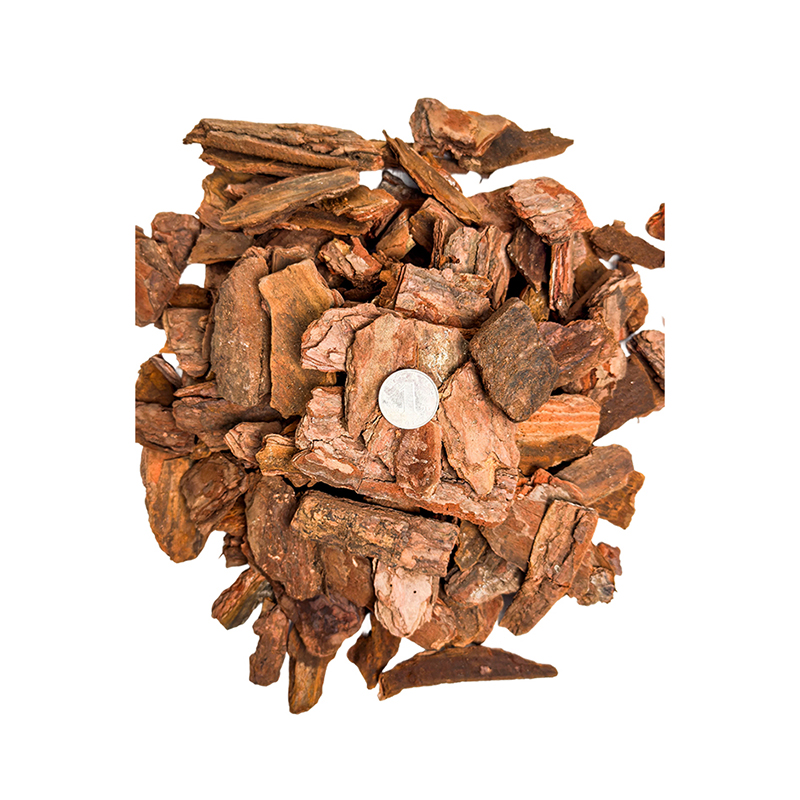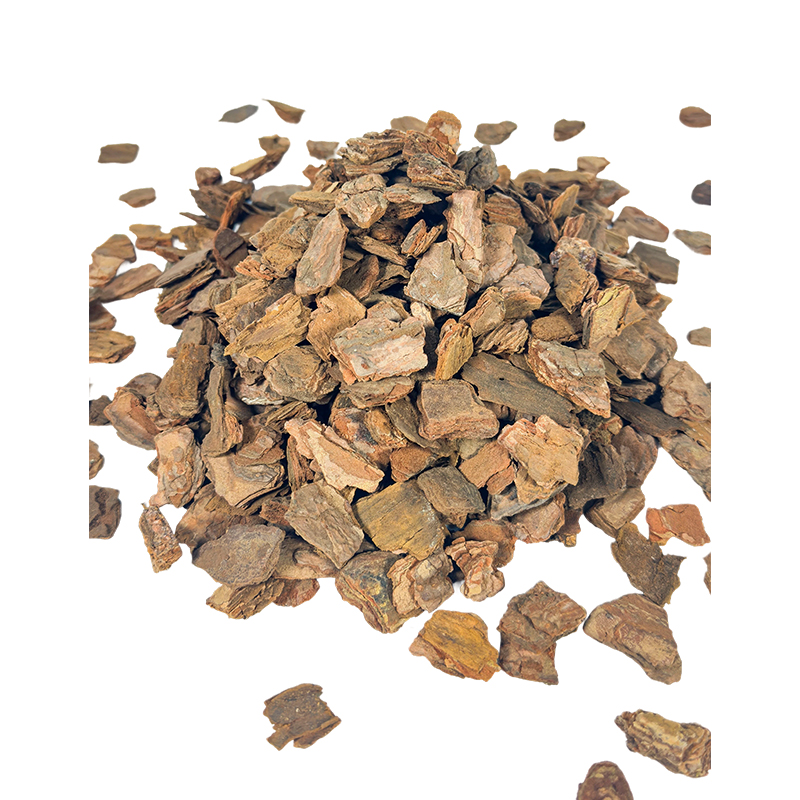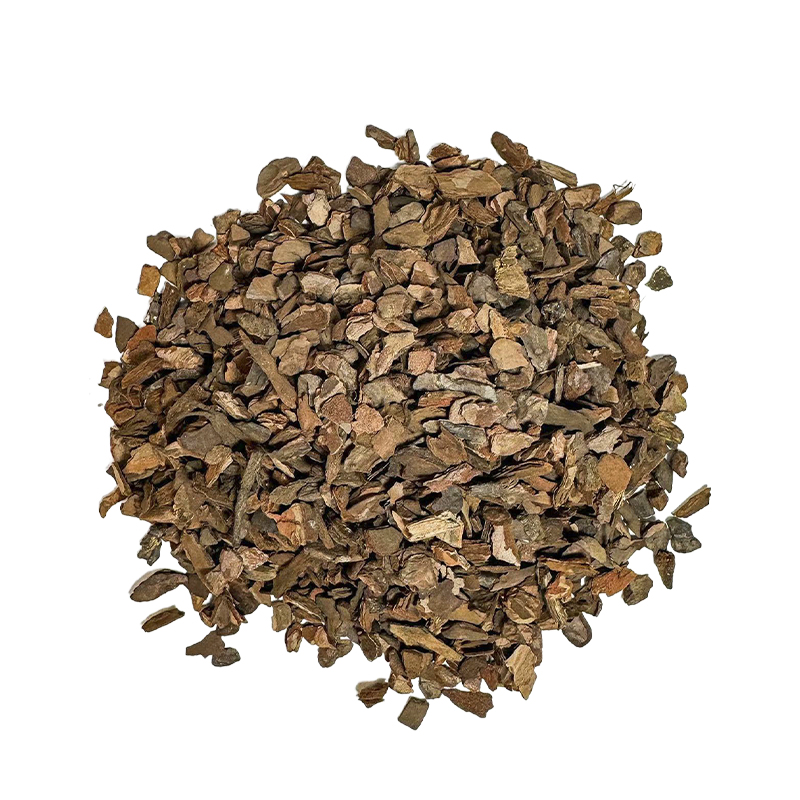Is the particle size of fermented pine scale pine bark #3 suitable for orchid root growth, ensuring airflow and avoiding suffocation?
Release Time : 2025-10-13
When growing orchids, the choice of planting material is often more critical than care techniques. Orchids don't grow in ordinary soil. In their natural environment, their roots often cling to tree trunks, rocks, or humus crevices, relying on air circulation and intermittent water for nourishment. Therefore, an ideal growing medium must mimic this native environment, providing both adequate moisture retention and ensuring free root breathing to prevent rot caused by waterlogging and oxygen deprivation. As an organic growing medium specifically designed for orchids, the strategically formulated particle size of fermented pine scale pine bark #3 is crucial for achieving this balance.
Particle size directly impacts the structural stability and internal microenvironment of the medium. Excessively fine particles tend to compact, forming a dense layer that blocks air circulation and retains water for extended periods, potentially suffocating the roots. On the other hand, excessively coarse particles lack sufficient water retention, making it difficult to maintain the necessary moisture in the root zone, leading to frequent dehydration. Fermented pine scale pine bark No. 3 undergoes meticulous screening and grading, breaking down pine bark into uniform, flaky particles. This structure preserves the natural fiber's fluffy structure while ensuring a well-distributed interstices between the particles. This structure forms a stable three-dimensional network within the pot, allowing water to slowly permeate and be stored along the fibers while allowing air to flow freely between the particles, creating a dynamic "respiratory system."
Orchidaceae plants, such as Dendrobium huoshanense, Oncidium, Cymbidium, and Cymbidium chinense, often have fleshy aerial roots covered in a spongy rhizome tissue, whose primary function is to absorb moisture and nutrients from the air. These roots are highly sensitive to their environment, resistant to both dryness and waterlogging. The granular structure of fermented pine scale pine bark provides an ideal attachment surface for these plants. Roots can naturally entwine between the pine scales, stabilizing the plant without compressing it. After watering, moisture is absorbed by the pine scale fibers, forming a thin film that is gradually absorbed by the roots. Excess moisture is quickly drained from the gaps between the particles, preventing them from accumulating around the roots. As the water evaporates, fresh air enters the spaces, completing a complete "wet-dry" cycle—a crucial rhythm for healthy orchid root growth.
Furthermore, the flaky form of pine scales, unlike regular particles, features naturally curled edges and a rough surface, effectively preventing excessive settling or compaction of the substrate over time. Even after repeated watering and the compression of growing roots, the pine scales maintain a certain amount of space between them, providing continuous ventilation channels. This structural stability ensures that the roots remain in a state of expansion for extended periods, preventing them from being forced into dormancy or degenerating due to environmental deterioration.
The fully fermented pine scales not only remove plant-harmful substances such as resin and tannins, but also enhance their physical durability. During use, they do not rapidly decompose into powder, but instead slowly degrade, gradually releasing trace organic nutrients while maintaining their overall structural integrity. This slow change process avoids sudden changes in substrate properties, allowing plants to grow continuously in a relatively stable environment.
In practical applications, the particle size of Fermented Pine Scale Pine Bark No. 3 also facilitates its integration with other planting materials. Whether used alone or mixed with charcoal, volcanic rock, or a small amount of sphagnum moss, it maintains excellent permeability and does not lose balance due to changes in the ratio. It can adapt to various cultivation methods, including potted, paneled, and vertical cultivation, demonstrating its wide applicability.
Ultimately, particle size is not an isolated technical parameter; it serves as a bridge connecting plant physiological needs with cultivation management. Through scientific particle size control, Fermented Pine Scale Pine Bark No. 3 combines the wisdom of nature with modern technology to create a "micro-ecosystem" for orchids that is both moist and breathable. This allows roots to expand freely in a safe environment, ensuring that every watering is nourishing rather than burdensome, allowing orchids to still feel the breath and rhythm of the forest while in artificial cultivation.
Particle size directly impacts the structural stability and internal microenvironment of the medium. Excessively fine particles tend to compact, forming a dense layer that blocks air circulation and retains water for extended periods, potentially suffocating the roots. On the other hand, excessively coarse particles lack sufficient water retention, making it difficult to maintain the necessary moisture in the root zone, leading to frequent dehydration. Fermented pine scale pine bark No. 3 undergoes meticulous screening and grading, breaking down pine bark into uniform, flaky particles. This structure preserves the natural fiber's fluffy structure while ensuring a well-distributed interstices between the particles. This structure forms a stable three-dimensional network within the pot, allowing water to slowly permeate and be stored along the fibers while allowing air to flow freely between the particles, creating a dynamic "respiratory system."
Orchidaceae plants, such as Dendrobium huoshanense, Oncidium, Cymbidium, and Cymbidium chinense, often have fleshy aerial roots covered in a spongy rhizome tissue, whose primary function is to absorb moisture and nutrients from the air. These roots are highly sensitive to their environment, resistant to both dryness and waterlogging. The granular structure of fermented pine scale pine bark provides an ideal attachment surface for these plants. Roots can naturally entwine between the pine scales, stabilizing the plant without compressing it. After watering, moisture is absorbed by the pine scale fibers, forming a thin film that is gradually absorbed by the roots. Excess moisture is quickly drained from the gaps between the particles, preventing them from accumulating around the roots. As the water evaporates, fresh air enters the spaces, completing a complete "wet-dry" cycle—a crucial rhythm for healthy orchid root growth.
Furthermore, the flaky form of pine scales, unlike regular particles, features naturally curled edges and a rough surface, effectively preventing excessive settling or compaction of the substrate over time. Even after repeated watering and the compression of growing roots, the pine scales maintain a certain amount of space between them, providing continuous ventilation channels. This structural stability ensures that the roots remain in a state of expansion for extended periods, preventing them from being forced into dormancy or degenerating due to environmental deterioration.
The fully fermented pine scales not only remove plant-harmful substances such as resin and tannins, but also enhance their physical durability. During use, they do not rapidly decompose into powder, but instead slowly degrade, gradually releasing trace organic nutrients while maintaining their overall structural integrity. This slow change process avoids sudden changes in substrate properties, allowing plants to grow continuously in a relatively stable environment.
In practical applications, the particle size of Fermented Pine Scale Pine Bark No. 3 also facilitates its integration with other planting materials. Whether used alone or mixed with charcoal, volcanic rock, or a small amount of sphagnum moss, it maintains excellent permeability and does not lose balance due to changes in the ratio. It can adapt to various cultivation methods, including potted, paneled, and vertical cultivation, demonstrating its wide applicability.
Ultimately, particle size is not an isolated technical parameter; it serves as a bridge connecting plant physiological needs with cultivation management. Through scientific particle size control, Fermented Pine Scale Pine Bark No. 3 combines the wisdom of nature with modern technology to create a "micro-ecosystem" for orchids that is both moist and breathable. This allows roots to expand freely in a safe environment, ensuring that every watering is nourishing rather than burdensome, allowing orchids to still feel the breath and rhythm of the forest while in artificial cultivation.







